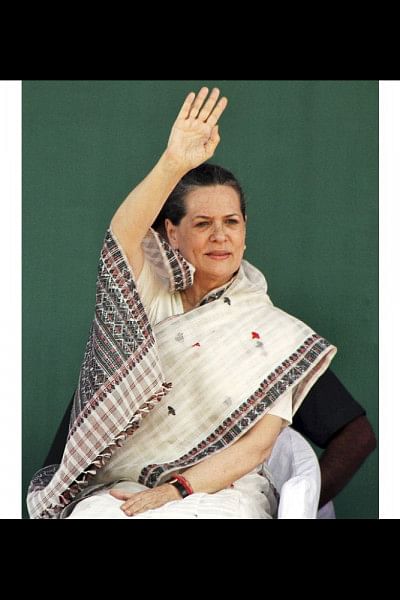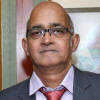Sonia Gandhi returns to coalition-building to stop BJP

After staying away from the heat and dust of gruelling summer electioneering and leaving the job of fronting the Congress Party's campaign to her son Rahul and daughter Priyanka, Sonia Gandhi is back to doing what she does best—coalition-building—even before the last votes in India's parliamentary polls are cast today and results declared four days later. The purpose: to stop the ruling Bharatiya Janata Party (BJP) from recapturing power in the event of a clear majority eluding the saffron party and the National Democratic Alliance (NDA) led by it.
Sonia Gandhi is understood to have written to the Congress' existing allies in the United Progressive Alliance (UPA), inviting them to a joint meeting in New Delhi on May 23, the day poll results will be declared, and her party colleagues are already reported to have mounted efforts scouting for new allies outside the UPA fold like Trinamool Congress, Samajwadi Party (SP), Bahujan Samaj Party (BSP), Biju Janata Dal (BJD) which rules Odisha, YSR Congress Party (YSRCP) (a breakaway group of the Congress which is tipped to pip ruling Telugu Desam Party and win power in Andhra Pradesh state assembly elections), and Telangana Rashtra Samithi (TRS) which is in power in Telangana. Between them, Trinamool, BJD, YSRCP and TRS are expected to get the lion's share of nearly 100 parliamentary seats in West Bengal, Odisha, Andhra Pradesh and Telangana taken together. The SP-BSP alliance in Uttar Pradesh with 80 seats is also expected to put up an impressive show.
In most of the key states barring Maharashtra and Karnataka, the Congress fought or was forced to fight the parliamentary polls without allies hoping to revive itself on its own. But the Congress leadership seems to have, over the last one month, come around to the view that if the BJP returns to power, it would be more difficult for the party to survive in the face of a fresh saffron onslaught and what BJP President Amit Shah had proclaimed "Congress-mukt Bharat." In an increasingly fierce, competitive and toxic political landscape in India, the Congress appears to have given priority to survival over revival. The Congress was on the opposite side of TDP, SP-BSP, TRS, YSRCP, BJD and Trinamool Congress in the parliamentary elections
Sonia Gandhi's outreach to UPA and non-NDA parties was preceded by the spadework done by senior Congress leaders Palaniappan Chidambaram and Ghulam Nabi Azad who went public with an important message reflecting a change in the party's strategy—that it will not insist on leading the next government or stand in the way of a coalition government of regional parties heading the new dispensation if the NDA falls far short of the majority mark of 272 seats in the 543-strong Lok Sabha. In short, the Congress has signalled that its top priority is to keep the BJP at bay like it had done in Karnataka last year when it gave up its claim to chief ministership despite having more seats in the assembly—allowing its junior alliance partner Janata Dal (Secular) with a lesser number to head the coalition government in order to stop the saffron party which had emerged as the single largest party without majority. This is a clear re-think in the Congress Party's tactical line. Sonia Gandhi was brought into the alliance-building game because the Congress knows she has much greater acceptability among UPA partners like Nationalist Congress Party and outside such as Mamata Banerjee, Mayawati and BJD Chief Naveen Patnaik who are less comfortable with Rahul Gandhi who is much more junior in age.
The main motive behind Sonia Gandhi's overtures to UPA and non-NDA parties is to ensure that in case of a fractured electoral mandate, the opposition camp is not caught napping and can move fast and not allow the BJP to win over the allies it needs to shore up the numbers in the event of a hung parliament. The three key issues the opposition faces are: (1) a show of unity post-polls after having fought the elections against one another in most states; (2) moving the president of India not to invite the largest single party first to form government; and (3) ironing out differences among the regional parties on the contentious issue of prime ministership. BSP Chief Mayawati has since long hinted at her prime ministerial ambitions. Mamata Banerjee too is known to nurse aspirations for that post.
While UPA constituents Dravida Munnetra Kazhagam (DMK) and Rashtriya Janata Dal (RJD) have already backed Rahul Gandhi as PM, TRS Chief K Chandrasekhar Rao has hedged his bets so far. Rao had earlier indicated that his party is not averse to doing business with the BJP. This time, he has also kept his other option open through his non-Congress non-BJP Third Front. Rao met Congress ally DMK head MK Stalin and Janata Dal (S) leader HD Kumaraswamy last week exploring the idea of a Third Front as well as exploring the possibility of working with the Congress. Stalin was understood to have conveyed to Rao that he should give up the Federal Front idea and join hands with the Congress. Regional leaders like Patnaik and Rao would like to keep options open in case of a hung parliament, hoping to extract pounds of flesh for their original political turf in states in return for extending to any grouping forming the new government.
Pallab Bhattacharya is a special correspondent for The Daily Star.

 For all latest news, follow The Daily Star's Google News channel.
For all latest news, follow The Daily Star's Google News channel. 



Comments